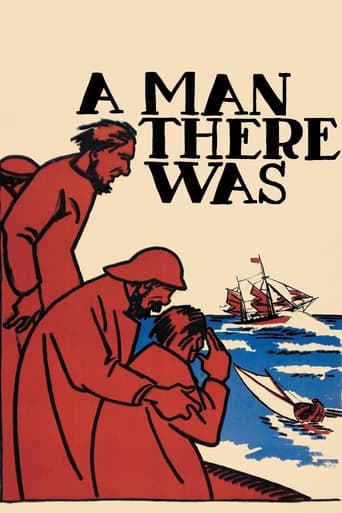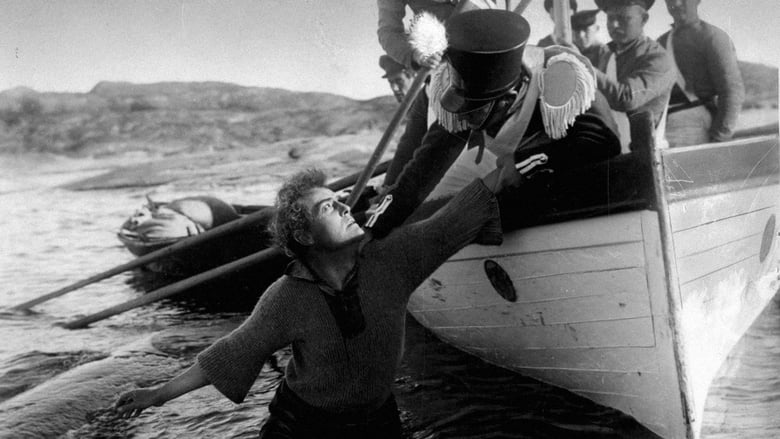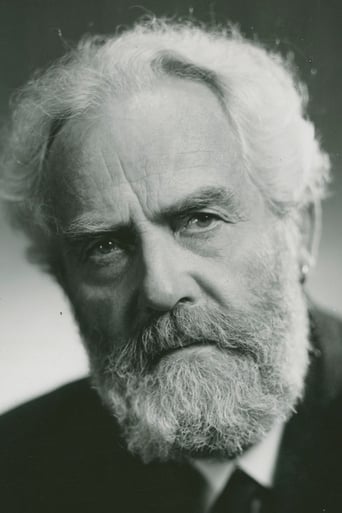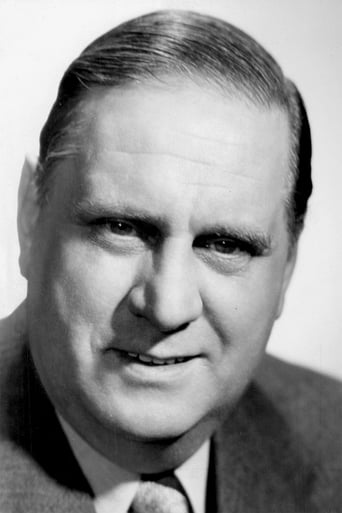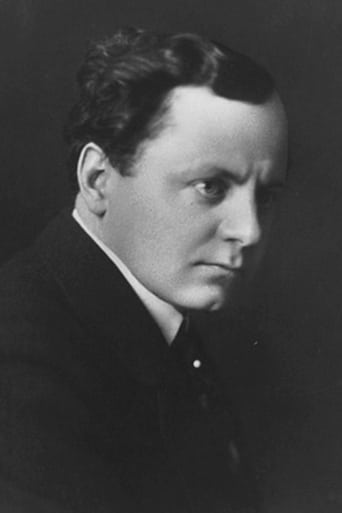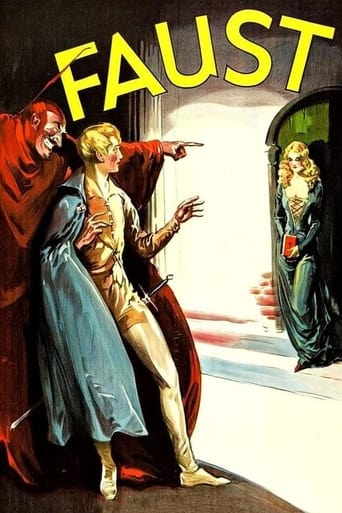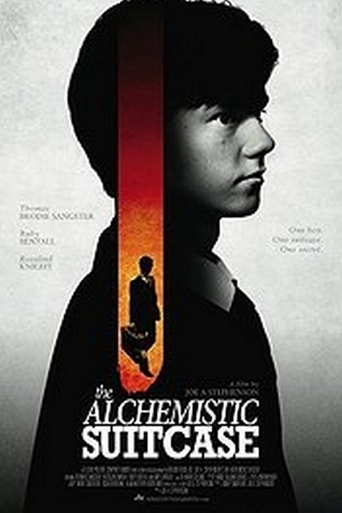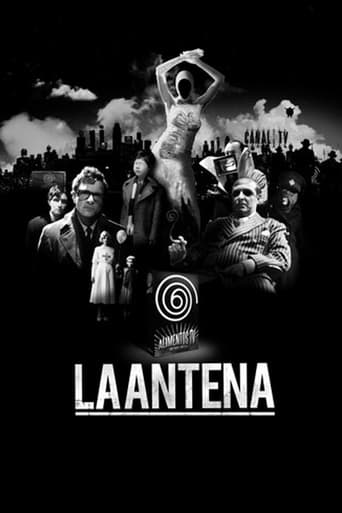A Man There Was (1917)
Terje Vigen, a sailor, suffers the loss of his family through the inflexibility of another man. Years later, when his enemy's family finds itself dependent on his benevolence, Terje must decide whether to avenge himself.
Watch Trailer
Free Trial Channels
Cast


Similar titles
Reviews
Overrated and overhyped
It's not great by any means, but it's a pretty good movie that didn't leave me filled with regret for investing time in it.
Although it has its amusing moments, in eneral the plot does not convince.
It's entirely possible that sending the audience out feeling lousy was intentional
Poverty, loss, revenge, and man's inhumanity to man are the themes that propel director Victor Sjostrom's film TERJE VIGEN (1917) (listed here under its English title A MAN THERE WAS). Sjostrom portrays the title character in this adaptation of a poem by noted author Henrik Ibsen. Terje is a sailor who supports his small family in Norway. A blockade by the English navy causes Terje to undertake a dangerous voyage to get supplies for his family, but he is caught and imprisoned. When he learns of his family's death from starvation, he becomes a broken man. One day he comes unexpectedly face to face with the captain responsible for his imprisonment, as he and his family are caught in a violent storm. What choice will Terje Vigen make?The story is told in approximately one hour. Modern filmmakers could learn much from the economy and concision of these early features. The narrative is straightforward, simple and unadorned, with no padding or extraneous subplots, and the story is told most effectively. It uses title cards sparingly, and in a very interesting fashion. Lines from the original poem are displayed on the screen, then the action described in the lines takes place, and the viewer is able to follow from there. The actors do fine work in this film. Sjostrom proves to be a fine actor in the lead role, imbuing his character with dignity, sorrow, tenderness, anger, and many other emotions. The supporting cast is also effective, particularly Bergliot Husberg as Mrs. Vigen. The actors show restraint and naturalism in their parts, largely avoiding the tendency towards big melodramatic gestures that marked contemporary theatrical productions. Equally notable is the cinematography, which depicts both the beauty and the dangerous ferocity of the sea, as well as the starkness of the island landscapes. Sjostrom made very effective use of the Norwegian scenery, causing nature to become a character in its own right in the film. Tinting adds to the moody atmosphere. The camera is mostly stationary, according to the custom of the time, but the shots are very well composed, like paintings. In addition, the film is well edited, not allowing shots to go on longer than necessary. This film was definitely very moving and memorable. TERJE VIGEN is a compelling and concise tale of the effects of man's inhumanity to man, and of the dilemmas that individuals face when tempted to cast compassion aside. It is rendered effectively through succinct scripting, heartfelt and naturalistic acting, and artfully composed cinematography. It is definitely a masterpiece of silent cinema. SCORE: 10/10
This is a faithful adaptation of the eponymous poem by Henrik Ibsen, and all inter-titles are quotations of Ibsen's original text. The film follows an innovative non chronological structure. In the brief opening scene, old grey-haired Terje Vigen is contemplating a stormy sea. It is followed by a long flash back showing his past life first with his wife and daughter, his trip to Denmark, his capture by the English, his life as prisoner in England, and finally his return home. There is even a flashback in the flashback when, while in jail, Terje Vigen remembers his wife and daughter. The last part starts with the same scene as the opening one, followed by the rescue of the British yacht. It is interrupted by a brief flashback when Terje Vigen realises the Captain of the yacht is the Englishman who had taken him prisoner. The most remarkable aspect of the film is the outdoor on-location filming on the coast and on small boats, which gives great authenticity to the action, in particular the very realistic chase and sinking of the dinghy in the middle of reefs. Editing is brisk, cross-cutting between views of the two boats and then between the English boat and Terje Vigen trying to escape by swimming underwater.See more and a link to the full film at: a-cinema-history.blogspot.com/2013/12
bizarre, lyrical intertitle cards--perhaps in original language it was This silent film might take a bit of getting used to as you watch it. That's because the intertitle cards are written in a very odd and lyrical manner--one that makes reading them a bit difficult at first. It's as if some poet decided to write them. Now I have no idea how close these are to the original cards, as the current copy we have of the film was made from a German print. Were the original cards written like this? And how much was lost in translating it to German and then English?Victor Sjöström starred in and directed this film. Few Americans today would recognize him or his name but some might remember his as the aging professor in Bergman's "Wild Strawberries". However, in the silent days he was a HUGE star--directing and starring in lots and lots of films. A few of them still exist today and the ones I have seen are very well made.This is the story of Terje and it begins around 1810. Sweden and Britain are at war and the British fleet is blockading the coastline. As a result, the common folk are hungry and Terje goes to sea to smuggle in food. However, it's risky business and he's eventually captured. The British Captain is a tough man and has no pity--sending Terje to prison for five years. When he is released and returns home, he learns that his beloved wife and child have died and Terje spends years pining for them. Then, out of the blue, he is handed an opportunity to exact revenge upon the Captain. What's Terje to do? Well, see the film for yourself!All in all, apart from a ridiculously improbable scenario at the end, the film was exceptionally well made and compelling. A very good early silent film and one that fans of the genre should see.
Victor Sjöström is perhaps best known as a director for the two silent features he made in America with Lillian Gish, The Scarlet Letter (1926) and The Wind (1928); as an actor, he is surely best remembered for his deeply moving performance as the aging professor in Ingmar Bergman's Wild Strawberries, made in 1957 when he was 78 years old. But the recent recovery of a strikingly well-preserved, tinted print of one of Sjöström's early works produced in his native Sweden should give his reputation a fresh boost and firmly re-establish his place as one of the great directors of the cinema's first generation, alongside D.W. Griffith, Maurice Tourneur, and Erich Von Stroheim. 'Terje Vigen,' based on a poem by Henrik Ibsen, is a remarkably sophisticated film of great beauty, a tragic tale with an ending that is unexpectedly uplifting. I can't recall any other movie I've seen that tells such a sad story and nonetheless left me feeling so exhilarated at the finale.This project marked a personal and professional milestone for the director. A former stage actor, Sjöström made his movie debut as a performer in 1912 at a studio called Svenska Biografteatern and began directing films for the company soon afterward, but in later years he asserted that most of his early efforts were vulgar and conventional. By the summer of 1916 he was at a low-point, unhappy about his career and the recent failure of his marriage. When producer Charles Magnusson suggested he adapt Ibsen's epic poem "Terje Vigen" Sjöström was skeptical of its potential as screen material, that is, until a bicycle trip to the Grimstad coast, where the poem is set, changed his mind. For financial reasons the filming took place on the sea shore near Stockholm rather than Grimstad, but the director took full advantage of his location's rocky coast and crashing waves, making the landscape an integral part of his film. When the lead actor originally slated to play Terje Vigen dropped out Sjöström took the role himself, and thus put his personal stamp on the finished product. He gave a measured yet intense performance in the title role and appeared in practically every scene.The story is set in the early 19th century and may remind some viewers of the tale of Enoch Arden (which had supplied the plot of one of D.W. Griffith's strongest Biograph dramas in 1911). Terje Vigen is a fisherman who quits the seafaring life to marry and start a family in Grimstad, a coastal village. But the Napoleonic wars sweep Europe, and when the British navy sets up a blockade of his island the threat of starvation becomes a grim reality. Rather than see his wife and daughter starve, Terje attempts to run the blockade and return with food. He almost succeeds, but the British spot him in his small boat, give chase, and eventually catch him. Dragged onto the deck of the British frigate he begs for mercy, but the Captain coldly ignores his pleas and has him imprisoned. Five years later Terje is released and returns to his village to find strangers living in his home: his wife and daughter died of starvation. Years pass, and Terje dreams only of vengeance. When a yacht founders off the coast he rescues the owner with his wife and child, and recognizes him as the British captain who denied him mercy years earlier. Terje has it within his power to kill all three, but the sight of the child restores his humanity. He spares them, and his desire for vengeance is conquered.The first thing you notice about this film is that the seaside landscapes are thrilling. The cinematography is excellent throughout, but 'Terje Vigen' is more than just a series of beautiful images. Sjöström's Terje is a strong and dignified protagonist. In a role that could easily have lent itself to eye-rolling histrionics the director did not permit himself to overact, and he set the tone for the other performers: there isn't a single false moment from anyone. Sjöström's directorial technique is especially impressive during the emotional high point, Terje's frantic attempt to escape the British sailors in his boat. It's startling to find a sequence like this one in such an early feature: the director puts the viewer squarely in the midst of the action by alternately placing his camera in each of the boats. He cuts back and forth between shots of Terje's arms furiously rowing and shots of the uniformed British sailors coolly coordinating their pursuit. The camera rocks with the ocean, the tempo of the editing accelerates, and the suspense builds sharply. It's an amazing sequence, especially coming after the stately, melancholy introductory scenes on shore. The sea chase also features the only moment of humor, when Terje briefly believes that he's eluded his pursuers, and "cocks a snook" at them (i.e. puts his thumb to his nose and waggles his fingers). But his triumph is short-lived.The story is a tragedy, but Terje's climactic change of heart is what makes this film a surprisingly uplifting experience. After reading a synopsis of the plot I confess I sat down to watch the film expecting it to be gloomy and depressing, but instead found an exciting, expertly-handled work of silent cinema that left me buzzing. Apparently 'Terje Vigen' marked Victor Sjöström's first international success, popular not only in Sweden and throughout Europe but also in the U.S., Latin America and Asia; fully ninety years after it was produced I can understand why.

